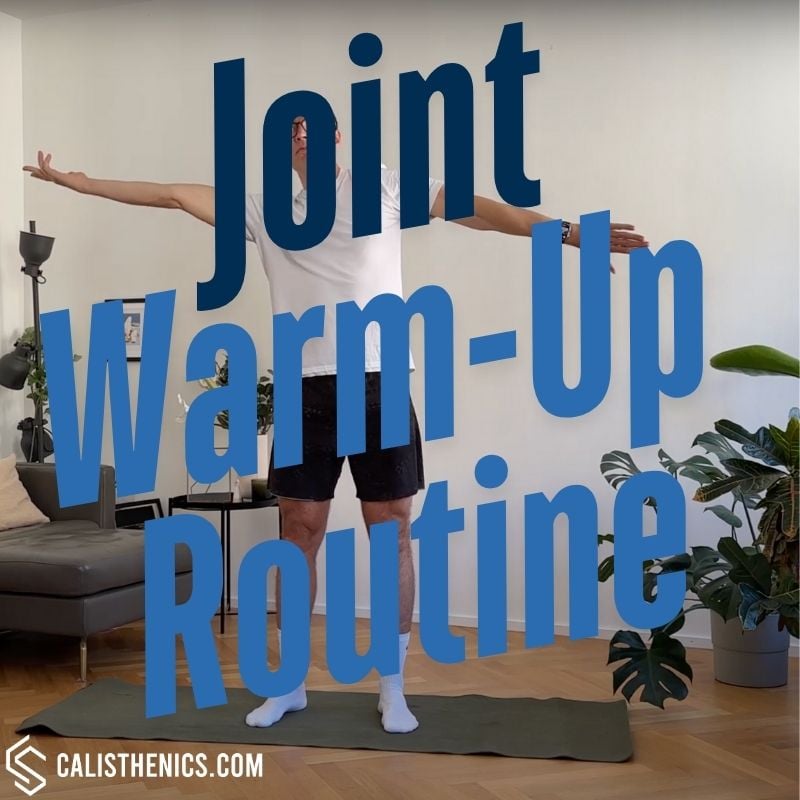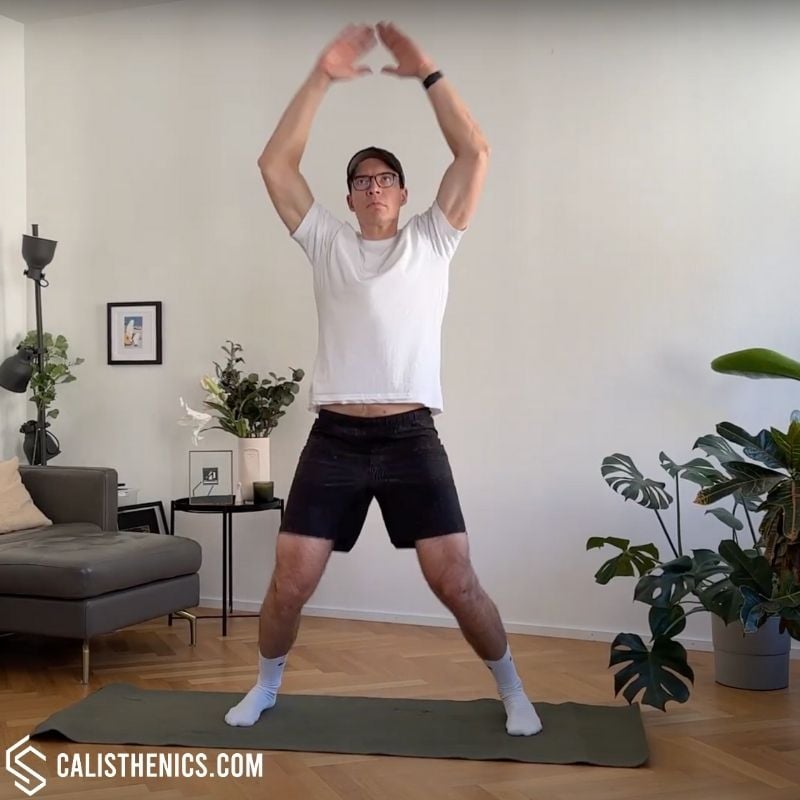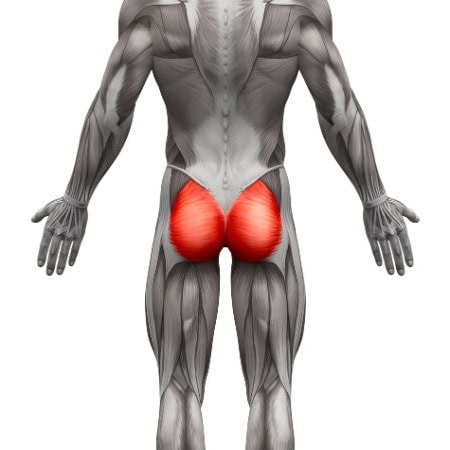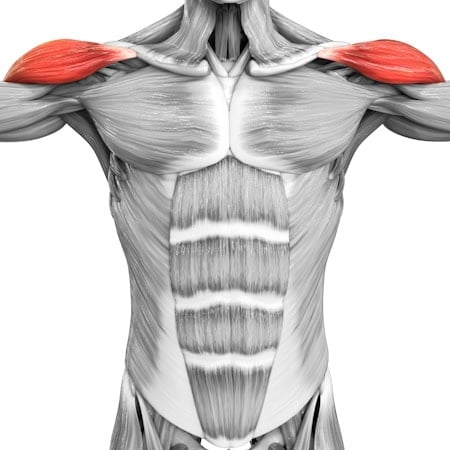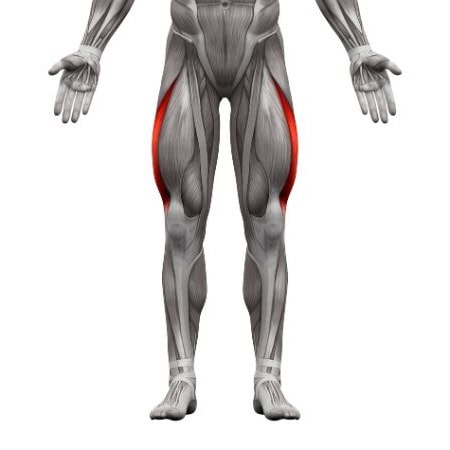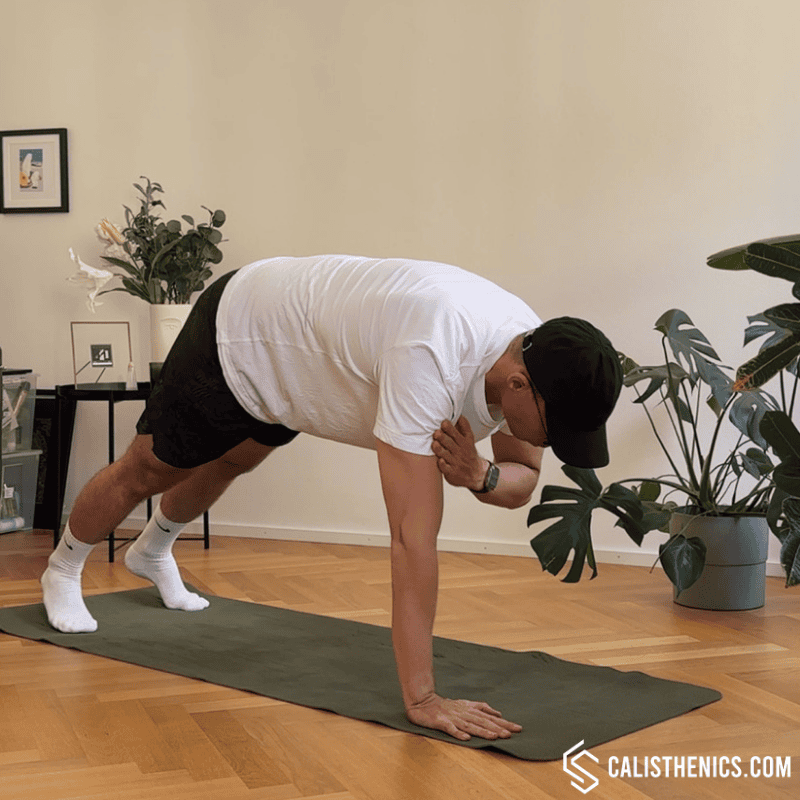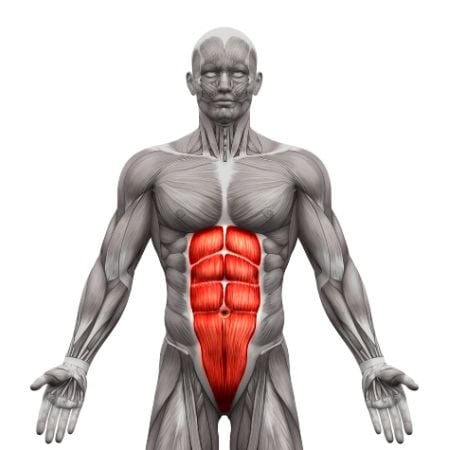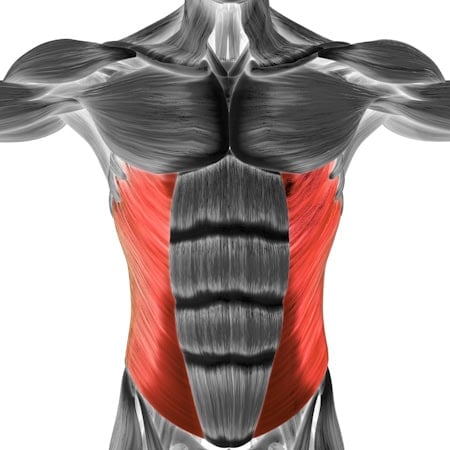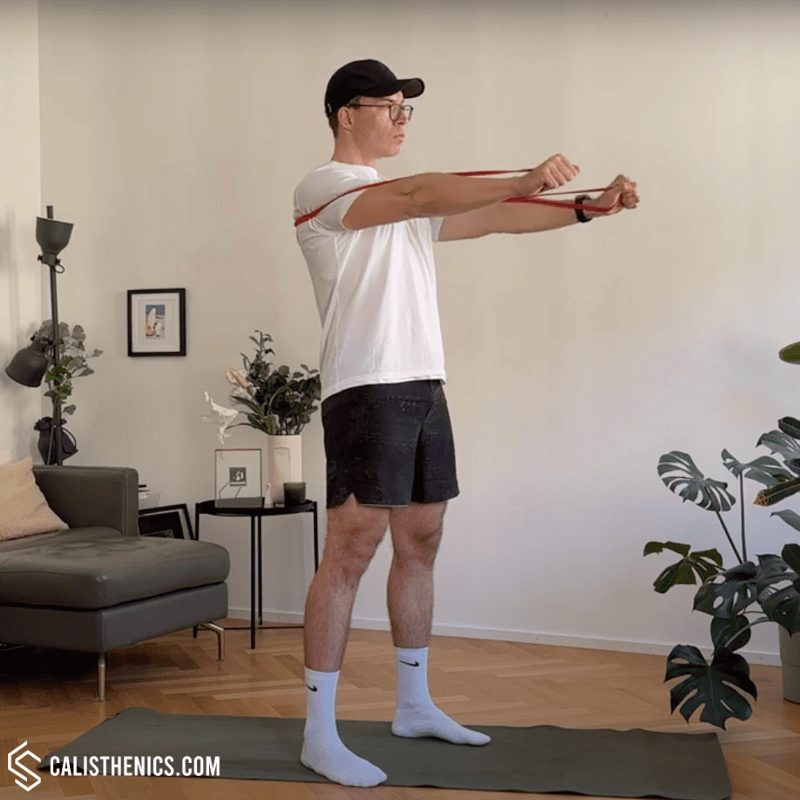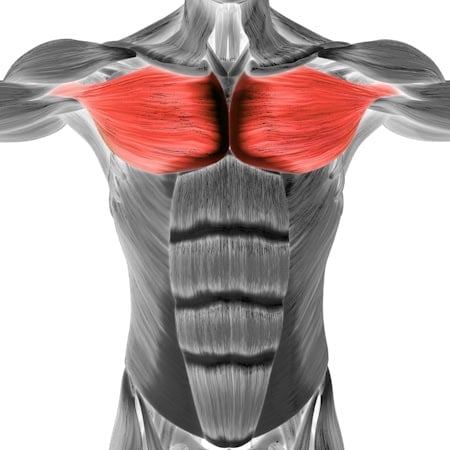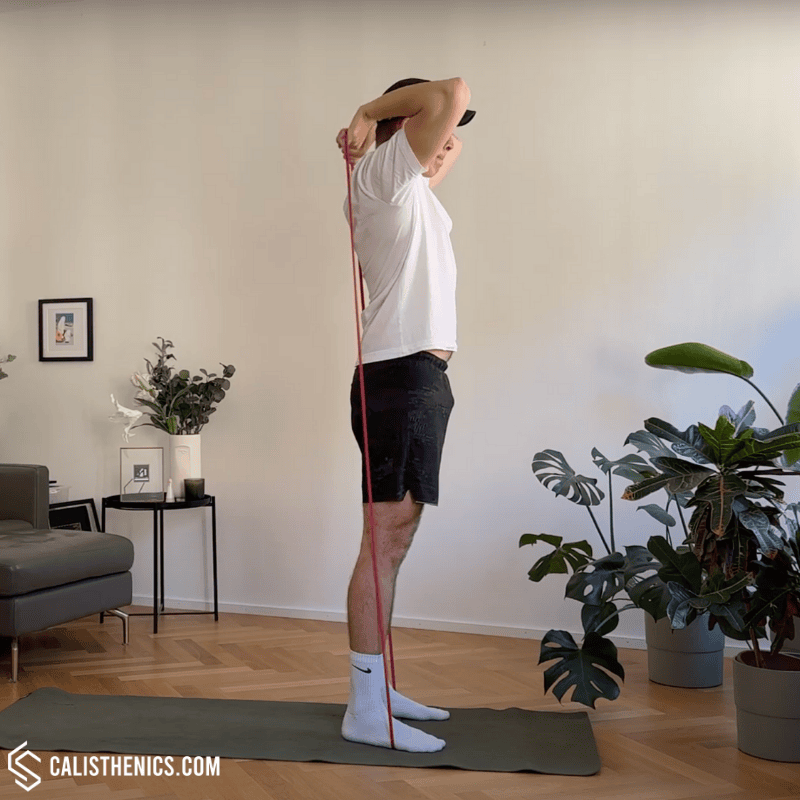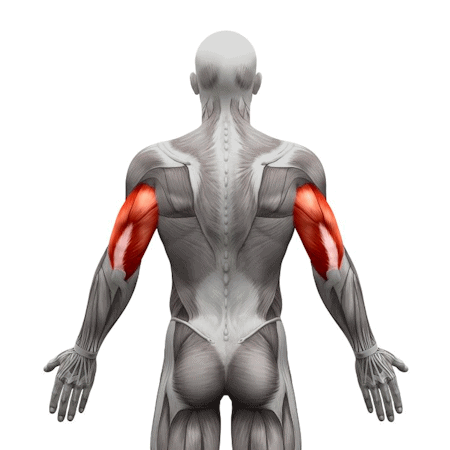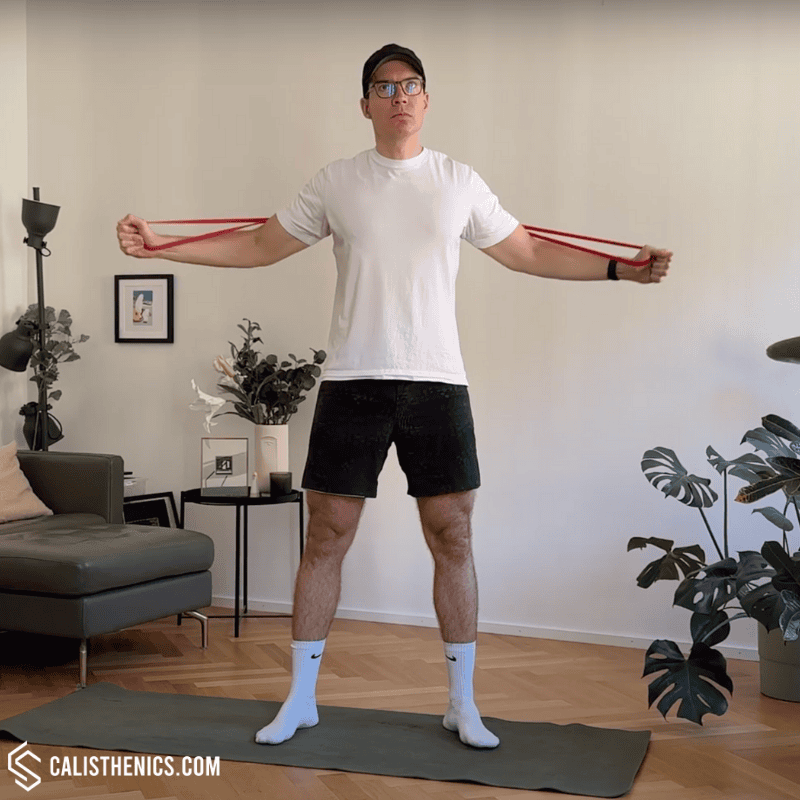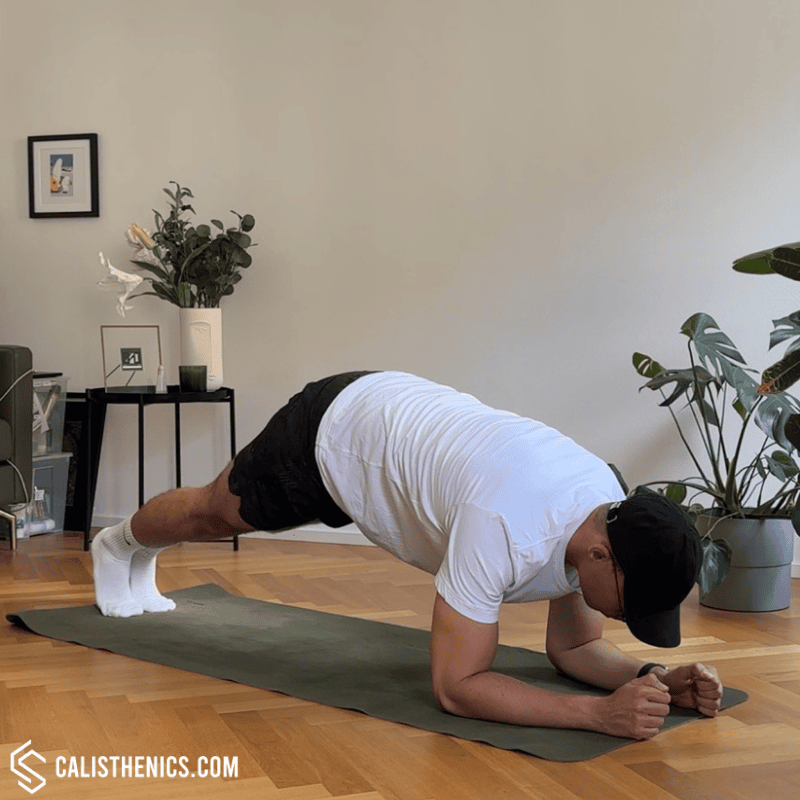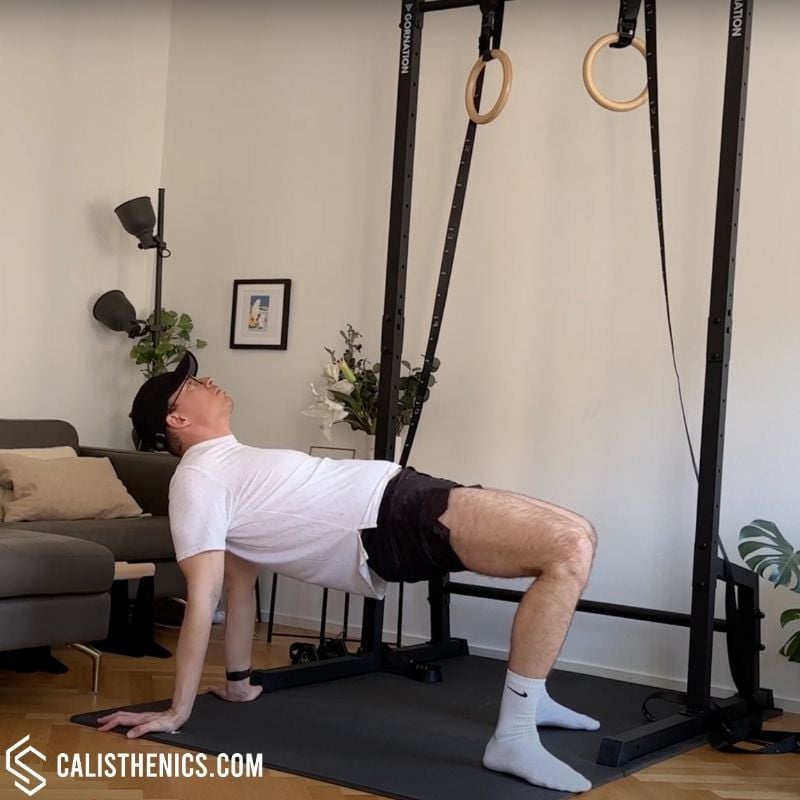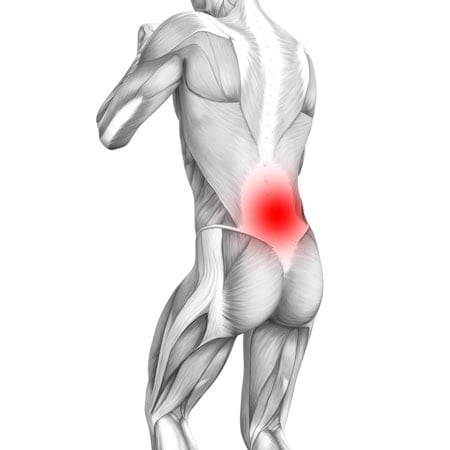Push 1: Quick Chest and Triceps Workout with Resistance Band
🎯 Workout Description:
This is a zero-impact, joint-friendly session to safely wake up your chest, shoulders, and triceps. Perfect for absolute beginners or those returning from a break. The entire strength section uses resistance bands only to teach muscle activation without joint strain.
👤 Who It’s For:
Beginners not yet able to do a push-up, or looking for a gentle but effective starting point.
🧰 Equipment Needed:
Resistance Bands

*alternative buying options:
👉 PULLUP&DIP (DE) use code CALIS10 for 10% off
👉 GORNATION (UK&EU) use code CS10 for 10% off
- High quality natural latex
- Multiple sizes: great for beginners and advanced
- Inlcudes a door anchor for standalone exercises
Warm-Up
-
1 round: Joint warm-up routine
-
2 rounds (no rest):
-
20 sec Jumping Jacks
-
12 Plank Shoulder Taps (or Kneeling Shoulder Taps)
-

No muscle groups found for this post.
Tips
-
Move slowly and deliberately to avoid sudden movements.
-
Keep circles smooth and controlled—avoid jerky motions.
-
Breathe steadily and deeply to maximize relaxation and blood flow.
-
Gradually increase the range of motion as your joints warm up.
-
Perform each movement for 15-20 seconds, or until joints feel loosened.
-
Customize your routine slightly based on the specific demands of your workout.

Muscle groups:
Tips
-
Keep your movements light and bouncy, not stiff or stompy.
-
Maintain a steady breathing rhythm, especially in longer sets.
-
Engage your core to support posture and absorb shock.
-
Land on the balls of your feet and roll through the foot gently to protect your knees.
-
Scale the speed based on your fitness goal—slower for warm-up, faster for conditioning.
-
Stay relaxed in the shoulders and arms, avoiding unnecessary tension.
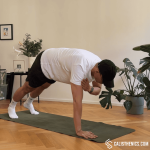
Tips
-
Core Engagement: Keep your core tight throughout the entire movement. This is key to minimizing any rotation or movement in your hips and torso as you lift each hand.
-
Hip Stability: Focus on keeping your hips level and preventing them from swaying side to side. A wider stance with your feet can provide better stability as you progress.
-
Slow and Controlled: Perform the shoulder taps slowly and with control to maximize core engagement and prevent losing form.
-
Breathing: Breathe steadily throughout the exercise. Inhale as you prepare to lift your hand, and exhale as you tap your shoulder. Controlled breathing will help stabilize your core and prevent fatigue.
Strength
Structure: Superset format — Perform A1, rest 30 sec, then A2, rest 30 sec, then A3. Rest 60 sec after the full round. Repeat for 3 sets total.
-
A1: Resistance Band Front Pushes – 15 reps
-
A2: Resistance Band Triceps Extensions – 15 reps per arm
-
A3: Resistance Band Chest Flys – 12 reps
Focus on slow tempo and full range. This is about activation, not speed.
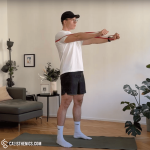
Muscle group:
Tips
-
Secure Band Position: Ensure the band is securely positioned across your upper back and won’t slip during the exercise.
-
Engage the Core: Keep your core tight to stabilize your torso, preventing any leaning or arching of the back.
-
Avoid Locking Elbows: Avoid fully locking your elbows at the end of the push to keep constant tension on the muscles.
-
Controlled Movements: Perform the exercise slowly, especially when returning to the starting position, to fully engage the muscles.
-
Breathe Steadily: Exhale as you push forward, and inhale as you return to the starting position, maintaining a steady rhythm and control.

Muscle group:
Tips
-
Secure Band Position: Ensure the band is securely anchored under your feet and doesn’t slip during the exercise.
-
Keep Elbows Pointed Up: Avoid letting your elbows drift outward; keep them close to your head to target the triceps effectively.
-
Engage the Core: Maintain core engagement to prevent arching your back as you press the band overhead.
-
Controlled Movement: Focus on a slow, controlled motion, especially when lowering the band, to keep the triceps under tension.
-
Breathe Steadily: Exhale as you extend your arms up, and inhale as you lower them back down, maintaining a steady rhythm and control.
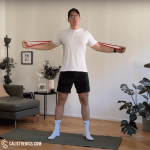
Muscle group:
Tips
-
Keep Elbows Slightly Bent: Avoid fully extending or locking your elbows to protect your joints and maintain tension in the chest.
-
Engage the Core: Keep your core tight to prevent arching your back, helping to stabilize your torso and improve posture.
-
Focus on the Chest Squeeze: Concentrate on squeezing your chest as your hands come together to maximize muscle activation.
-
Controlled Movement: Move slowly and avoid using momentum; focus on a controlled return to the starting position to keep constant tension.
-
Breathe Steadily: Exhale as you bring your arms together, and inhale as you open them back, maintaining a steady rhythm.
Finisher
Format: 30 sec each, alternate exercises for 5 minutes
-
Elbow Plank (or Knee Plank)
-
Tabletop Hold (or Reverse Plank)
→ Total: 5 sets = ~5 minutes

Tips
-
Straight Body Line: Ensure your body forms a straight line from your head to your heels. Avoid raising or lowering your hips too much, as this can compromise form.
-
Core Engagement: Keep your core muscles tight throughout the entire exercise. This helps stabilize your spine and prevents your hips from sagging or arching.
-
Elbow Positioning: Your elbows should be directly under your shoulders, creating a strong base of support. This will also help engage your shoulders and reduce strain.
-
Steady Breathing: Focus on controlled, deep breaths. Inhale through your nose and exhale through your mouth, which helps stabilize your core and manage endurance.
-
Avoid Tension in the Neck: Keep your neck neutral by looking down at the floor to prevent any tension or strain in the neck.
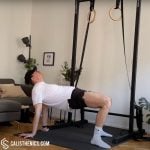
Muscle group:
Tips
-
Squeeze your glutes at the top to fully activate your posterior chain.
-
Look slightly upward to maintain neck alignment but avoid excessive tilting.
-
Engage your core to prevent lower back sagging.
-
If your wrists feel strained, try placing hands on yoga blocks or using fists instead of flat palms.
-
Perform dynamic reps by lowering and lifting the hips for added activation before holding the position statically.

